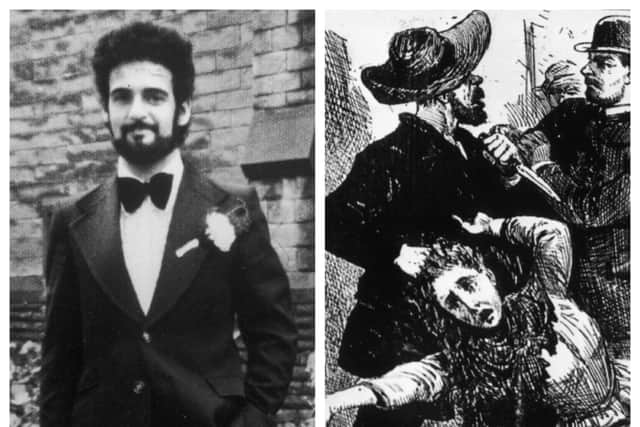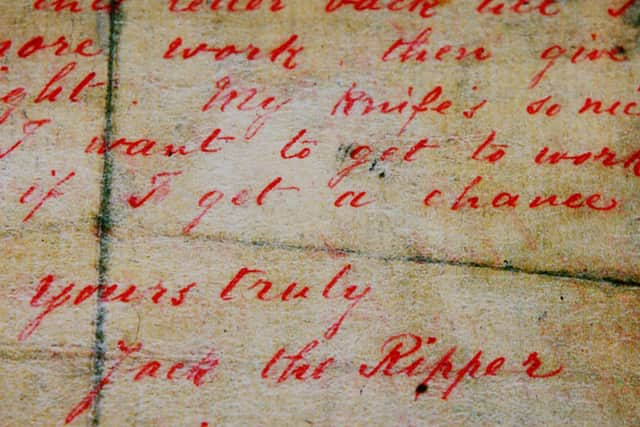Why was Peter Sutcliffe called the Yorkshire Ripper? Connection to serial killer Jack the Ripper explained
and live on Freeview channel 276
Peter Sutcliffe is one of Britain’s most notorious serial killers, he murdered 13 women and attempted to murder seven more between 1975 and 1980.
His crimes shocked the country, and led to a major police manhunt which is the subject of the upcoming ITVX drama series The Long Shadow, starring Toby Jones, Mark Stobbart, and Daniel Mays.
Advertisement
Hide AdAdvertisement
Hide AdThe series, which is due to be released later this month, follows the intense investigation to catch the killer and the mistakes that were made which enabled Sutcliffe to continue his grim crimes.
Whilst we know the identity of Sutcliffe today, during the five years he was active, he was known only as the Yorkshire Ripper, a chilling allusion to another of Britain’s sick serial killers.


Why was Peter Sutcliffe called the Yorkshire Ripper?
The name was given to the killer by the British press when his identity was still unknown - it was a reference to Jack the Ripper, a notorious Victorian serial killer who targeted prostitutes in London.
Most of Sutcliffe’s attacks were carried out in Yorkshire, although two of his victims were killed in Manchester. Sutcliffe was also from Yorkshire, having grown up in Bingley, and was finally caught in Sheffield.
Advertisement
Hide AdAdvertisement
Hide AdLike Jack the Ripper, Sutcliffe was the centre of a massive police manhunt, and the grim crimes of both killers filled the pages of national newspapers at the time, but there was far more than just notoriety that made the two cases similar.
What was the Yorkshire Ripper’s connection to Jack the Ripper?
There were several similarities between the two serial killers, whose crime sprees took place a century apart.
Jack the Ripper, also known as Leather Apron and the Whitechapel Murderer, targeted prostitutes, killing an estimated five victims in 1888, though the true number of those he killed has never been confirmed. Jack cut his victims throats before mutilating them further, cutting their stomach and sometimes removing their internal organs.


The killer got his moniker from a letter sent to the Central News Agency in London, which was signed Jack the Ripper, though the letter is widely believed to have been a hoax, potentially written by journalists to increase the sales of their newspapers.
Advertisement
Hide AdAdvertisement
Hide AdThe Yorkshire Ripper manhunt was also derailed by a hoax - a tape sent to the police by a man with a Sunderland accent who claimed to be the killer, led to investigators discounting evidence that suggested the killer was from elsewhere in the country.
Like Jack, Sutcliffe also targeted prostitutes, and told psychiatrists that he had heard a voice telling him to eradicate prostitutes. The comparison to Jack the Ripper has led to the myth that Sutcliffe only targeted prostitutes, but six of his victims were not involved in sex work at all.
However, the most gruesome similarity to Jack that drew the press to coin the term ‘Yorkshire Ripper’ was the way in which Sutcliffe killed his victims. He mutilated the women he killed using various crude weapons including a hammer, sharpened screwdriver and a knife.
In some ways, Sutcliffe was even more despicable than Jack the Ripper - whilst Jack killed and mutilated his victims, Sutcliffe sexually assaulted the women he killed. Additionally, he is also responsible for the deaths of more than twice as many women as Jack.
The crucial aspect of the two cases that separated Jack and Sutcliffe, was that the former was never caught, whereas the latter was brought to justice and died in prison in 2020.
